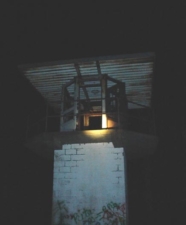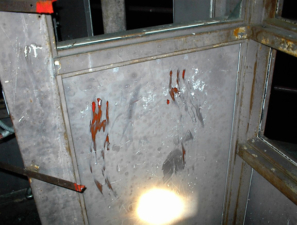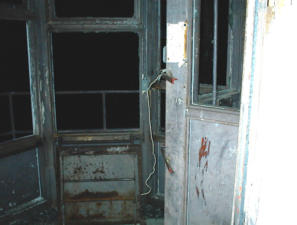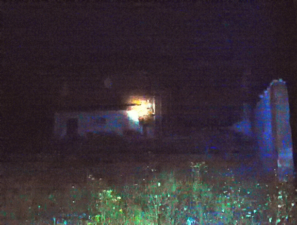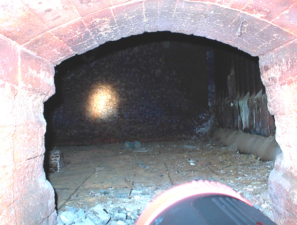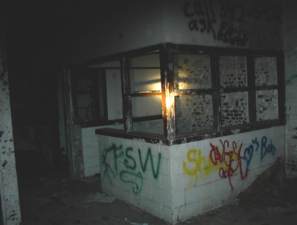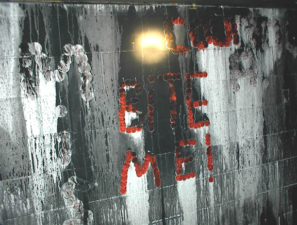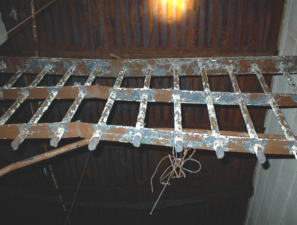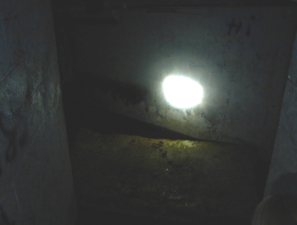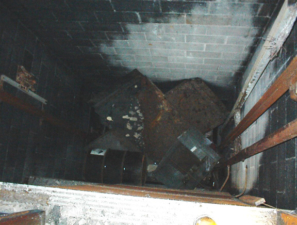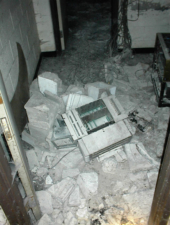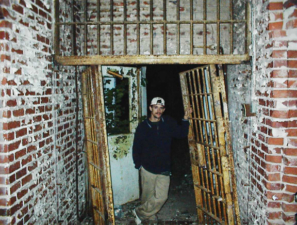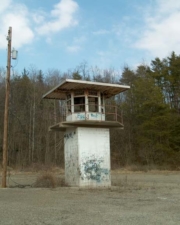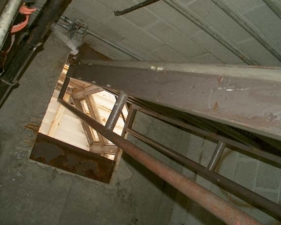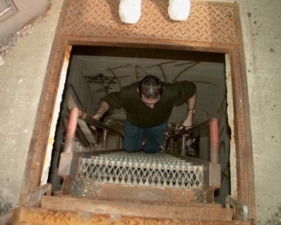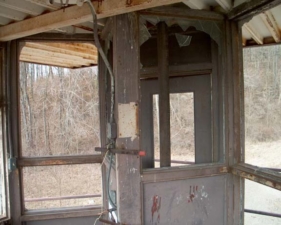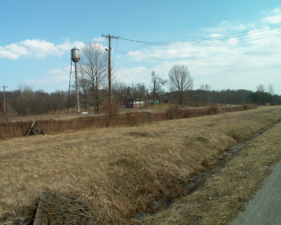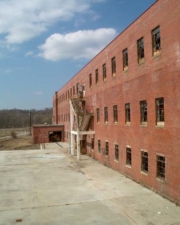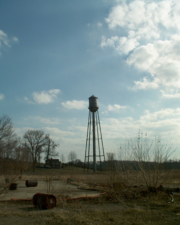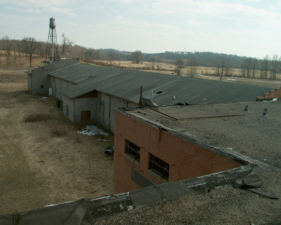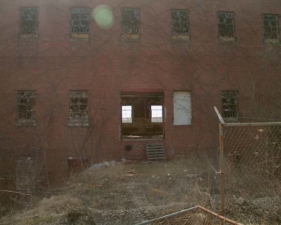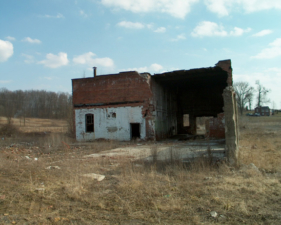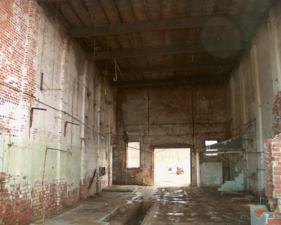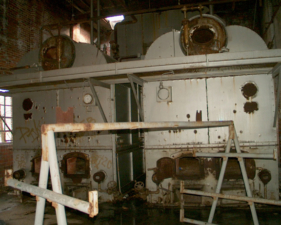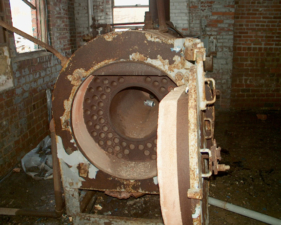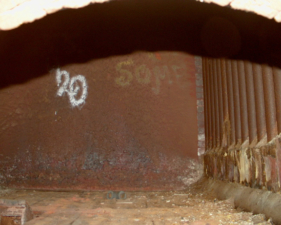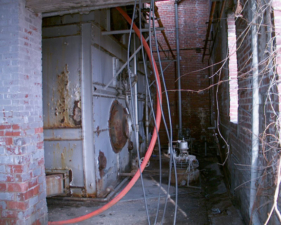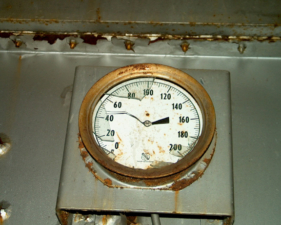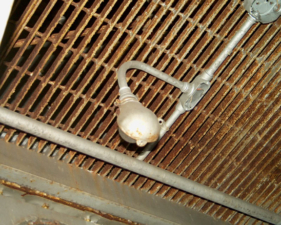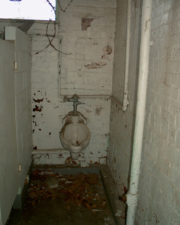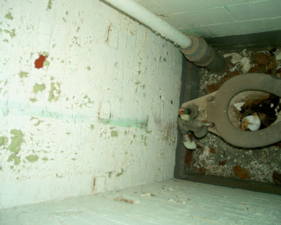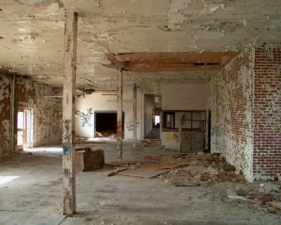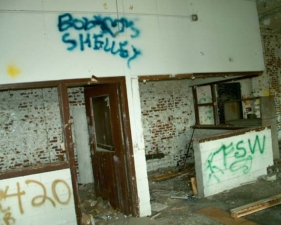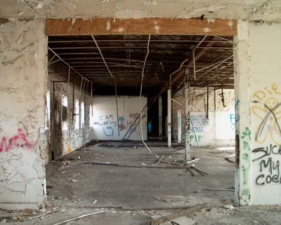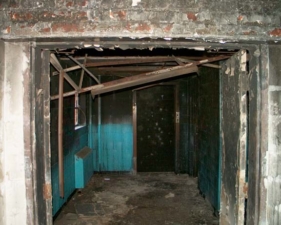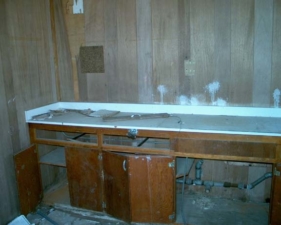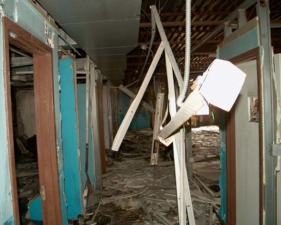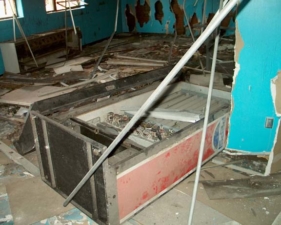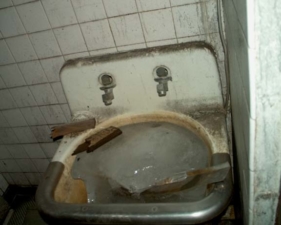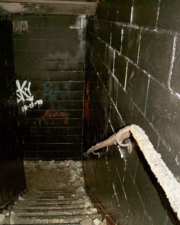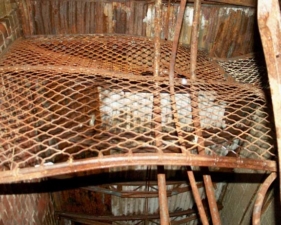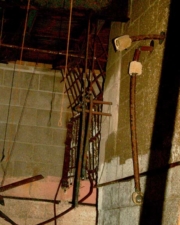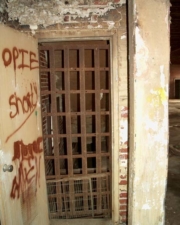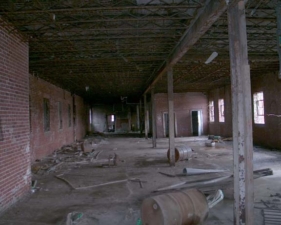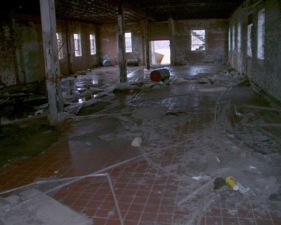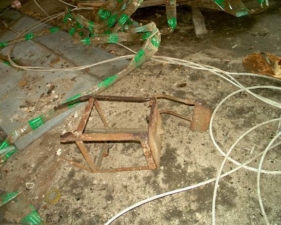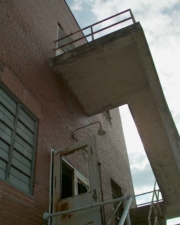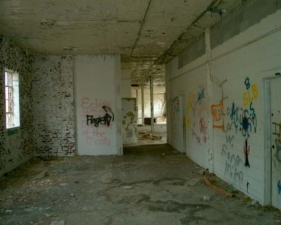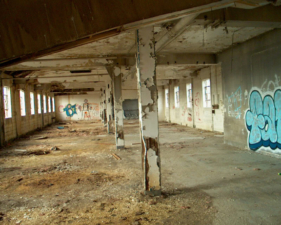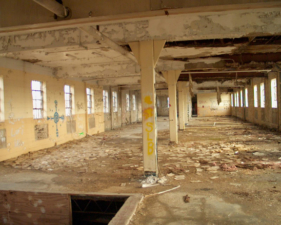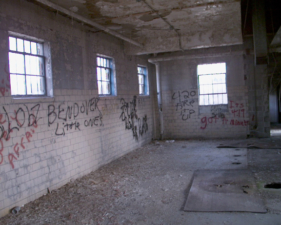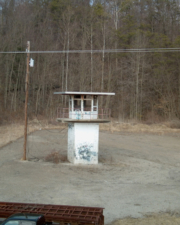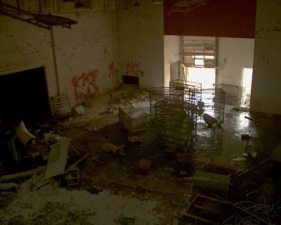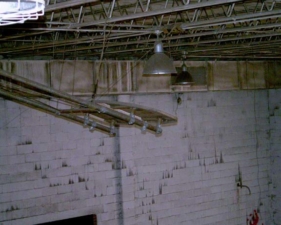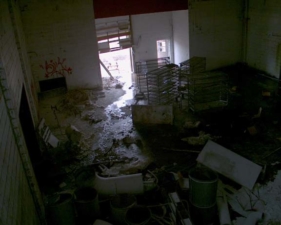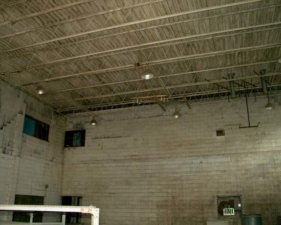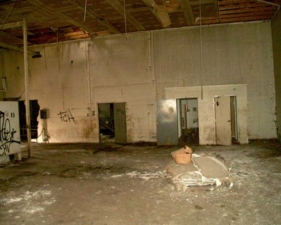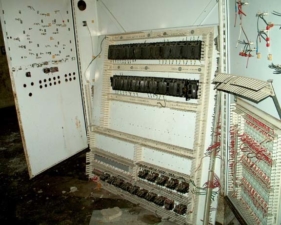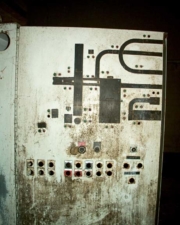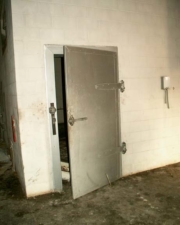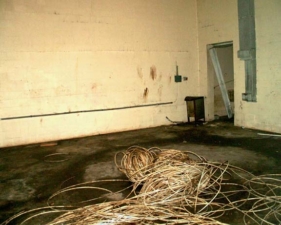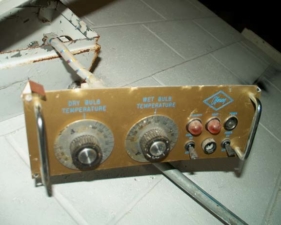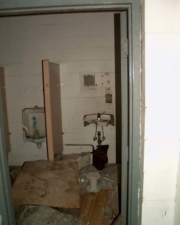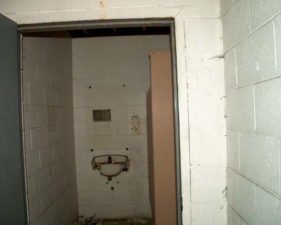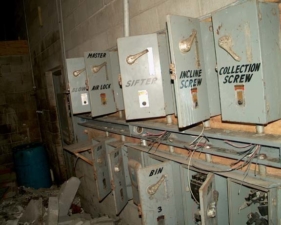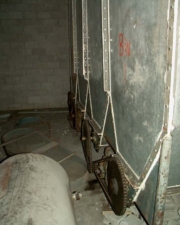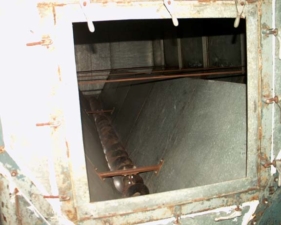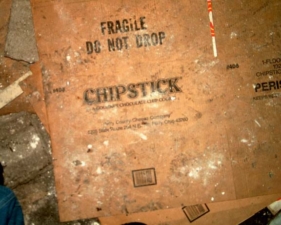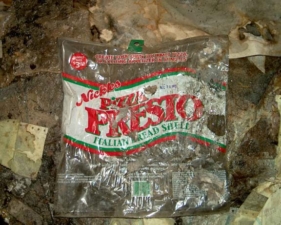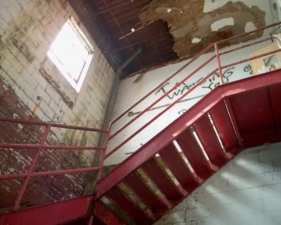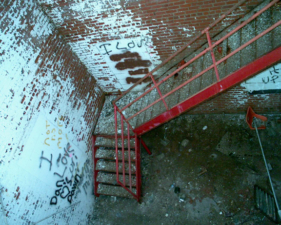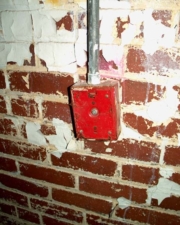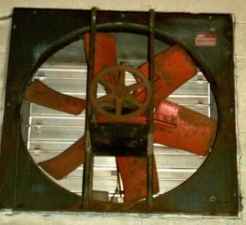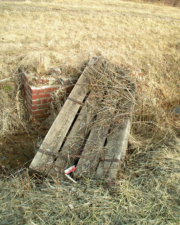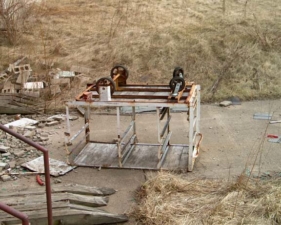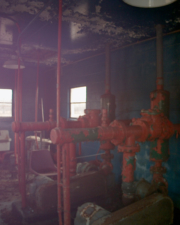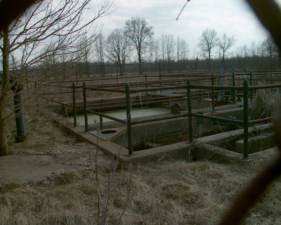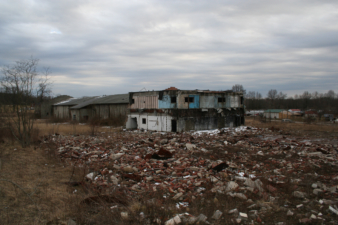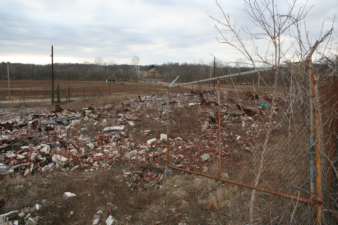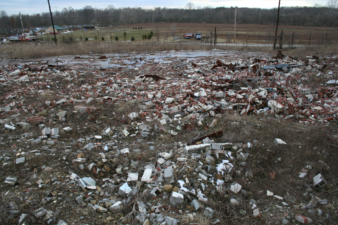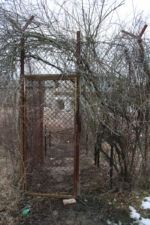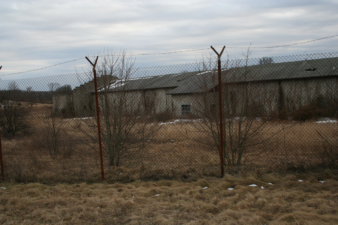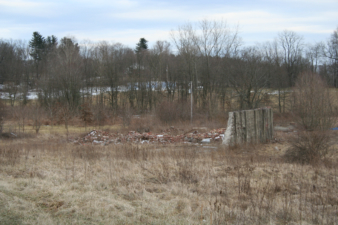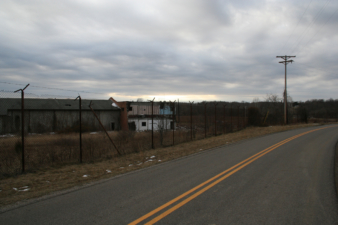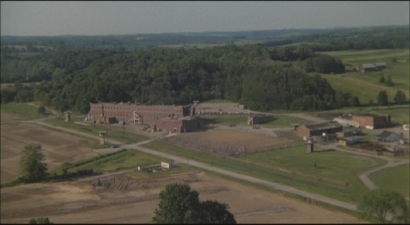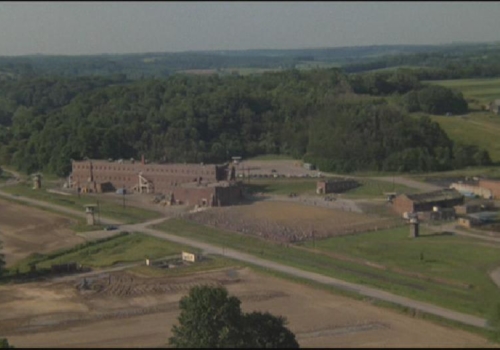The OES visited Junction City Prison on August 31, 2001, at 1:00 AM and followed up with several other trips, including a daytime trip on March 15, 2003. On our visits, the prison appeared to be explored quite often and had been a paintball battleground at some point. By interviewing some local people and speaking with Doug Miller of the Perry County Historical Society, we found that the Junction City Prison served as a satellite prison for the Ohio Penitentiary in Columbus. However, the building near Junction City was not originally a prison. The original brick plant was built in 1908 with labor supplied by residents of the village. But in 1913, the facility was purchased by the State of Ohio to be used as a center for the care of elderly and disabled prisoners. The prisoners used the 22 acres of land and the brick plant, where bricks were made for state structures and streets, while serving their time. Of course, brick manufacturers did not like the cheap brick prisoners were making and held several protests.
The prison saw its fair share of tragedies over the years. During an escape attempt on September 2, 1927, prison guard Grant Weakley was shot and killed by convicts Patrick Riley and Fred Kellogg as he escorted four inmates to a dentist office. Kellogg’s wife, along with a few other accomplices, had visited the dentist office the night before and planted guns in the lavatory. Inmates Kellogg and Riley each went to the restroom and retrieved a weapon. The duo then brandished their revolvers, with Riley pointing his firearm at Weakley’s heart as the guard sat on the oven. Weakley was shot three times and fell to the floor dead. Inmate Irwan Ewald briefly grappled with Riley before he was thrown violently onto the sofa. The fourth prisoner, Zigmond Wardoski, retrieved the guard’s sidearm and fired at Kellogg and Riley as they fled. Deputy Warden Herman C. Blosser had received word that there was going to be an escape attempt and had followed the guard and four prisoners into town. He was parked down the street in case the escape took place. He heard several shots and saw Riley and Kellogg run from the dentist’s office. Kellogg and Riley ran in two directions. Blosser chased down Kellogg and fired at him, hitting him in the groin. A sheriff’s posse located Riley a short time later, hiding on the outskirts of New Lexington. The plan had called for Kellogg’s wife to pick them up in her Chrysler, but the men never made it to the car. The two escapees turned murderers were sentenced to life at the Ohio Pen. It is now a tradition for the “Correction Officer of the Year” at the Southeastern Correctional Complex to honor Weakley in a graveside tribute every year.
On October 8, 1928, another tragedy struck the Junction City Prison. Sometime between midnight and 1:00 AM, a fire broke out at the prison’s dormitory, which was a temporary structure made of corrugated iron covering a wood frame. Inmate William O’Malley was tending to his duties as the prison baker when he noticed smoke and flames coming from the opposite side of the dormitory. He quickly notified the guards and awoke the other inmates. O’Malley pried open and battered down doors in an attempt to save about 80–100 inmates. In total, nearly 300 inmates were in the dormitory when the blaze broke out. O’Malley later received a commutation of his sentence from Governor Vic Donahey for his heroism during the fire. Men trampled each other in their attempts to escape the flames. Some prisoners used the chaos to escape, while others stayed to help their friends. The fire claimed the lives of 15 convicts, and 35 others were hospitalized. Several convicts who escaped during the chaos were later captured, some up to a year later. The original cause of the fire was believed to be faulty wiring in a linen closet, but inmate Ivan Pickering eventually confessed to setting the fire in an escape plot with two other inmates, John Tillotson and Elmer Whiting. The trio stuffed paper in the prison’s raters and registers. Then Pickering and Whiting made a torch out of Pickering’s blanket and set fire to the prison. While Whiting and Pickering escaped, it is believed that Tillotson died in the fire. The prison burned in about 13 minutes.
Inmate labor rebuilt the prison with brick, and it was reopened, but closed a short time later in 1935. All inmates were sent back to the Ohio Pen. The prison was reopened in 1938 with an additional 40 acres and a third floor. Several more escapes were made over the years, most of them short-lived. Junction City Prison was closed for some time once again and reopened in 1968 as a treatment and research center for the state Division of Psychiatric Criminology under the direction of Dr. Lowell Cunningham. One hundred fifty inmates in need of psychiatric help were relocated to the prison and were looked after mostly by professional people rather than guards. Prisoners at Junction City would receive one-on-one counseling and were taught skillsets that would put them on the track of contributing to society rather than engage in criminal behavior. An educational and youth center was added in 1970 and the “hole” was eliminated in 1971. Dr. Cunningham left the facility in 1973 to pursue a private psychiatric service in Florida.
On January 1, 1974, two inmates took three female workers hostage at knifepoint in the records office. The prisoners, Michael Woods and Bernard Barbiaux, demanded a car be delivered to them and no interference with their escape. After several tense hours, twenty-eight troopers from the Ohio Highway Patrol raided the room, killing one inmate and injuring the other. All three women escaped without injury. During the ordeal, inmates on the second floor started a small fire. Luckily, this fire was quickly extinguished. Governor James A. Rhodes conducted an efficiency audit in 1975 and it was determined that Junction City Prison and three other facilities should be closed. Junction City Prison closed as a correctional facility for good in 1977.
The prison was purchased by Nepco soon after it had closed for use as a gasohol refinery (a successful oil and gas well had been drilled on the site in 1930). One of the more interesting facts about Junction City Prison was the 1978 filming of the 1980 movie Brubaker on the property. The movie starred Robert Redford, Yaphet Kotto, David Keith and Morgan Freeman. The film was about a warden who took a failing, corrupt prison and turned it around by entering the system secretly as a prisoner. Brubaker is a must-see film, especially if you have ever paid a visit to Junction City Prison. Since the film used local talent, Hollywood came and left the area without any noticeable population change. Click Here if you would like to purchase a copy of Brubaker from Amazon (referral link).
In the early 1990s, a company called Perry County Pizza occupied the newer cinderblock section of the prison. The company made frozen pizza kits for school fundraisers, using the farm to grow fresh peppers for their kits. The company left behind several pieces of equipment and documents related to the pizza kit. It seemed as if the company closed in a hurry and did not bother selling off their assets. The old prison sat vacant for a number of years after Perry County Pizza left. The majority of the prison and outbuildings were demolished in 2005. The newer cinderblock section remains and has been renovated as part of a junkyard.
During our visits to the prison prior to its demolition, we conducted crude paranormal investigations as this was no place to leave equipment unattended. We found a consistent cold spot that coincided with high electromagnetic field (EMF) readings just outside of the middle stairwell door on the first floor. At one point, we followed the cold spot into an office across the hallway from the stairwell door. As OES Founder Jason R. conducted an EMF sweep of the room in an attempt to locate the cold spot, another OES member coming into the room behind him felt a cold breeze go past and alerted everyone. Jason R. turned toward him with the EMF meter in-hand and felt a sudden intense cold on his hand. The EMF meter spiked to the top of the scale for a few moments until the cold spot swiftly moved back toward the hallway. At that moment, a friend of the OES who was standing in the hallway suddenly froze in her position. As the rest of the exploration team quickly entered the hallway to pursue the moving cold spot, the OES friend broke down and began to cry. She stated that a very sudden coldness with a “pins and needles” feeling (like when your foot goes to sleep) overcame her entire body and she could not move or speak. Once she regained her composure, we decided to leave the building for the night.
On a later nighttime trip to the prison, one of our female members experienced something strange after deciding to wait in the car along Pen Road NW on the east side of the building instead of entering the prison. Since the three other members did not want to leave her for long, we decided to only explore the prison’s main floor. After walking around for about ten minutes, we returned to the car to find all of the interior lighting on and our female member ducking down in the back seat. We opened the door and asked her what was going on and she stated that she saw people on the upper floors looking out at her with a light on. Right after seeing this, she stated that she witnessed a couple of prisoners and a guard walking up the road toward her. Upon seeing this, she turned on the lights and ducked behind the seats. There were no other vehicles around and we were the only people in the building.
Thanks goes to Charles, Jeannie and Rob for taking us on our initial trip to Junction City Prison. Another thanks to the Perry County Historical Society for sharing some of the information above.
Location Information: Demolished
The prison was located at the intersection of South Adcock Road and Pen Road NW west of Junction City; Perry County.
Photographs
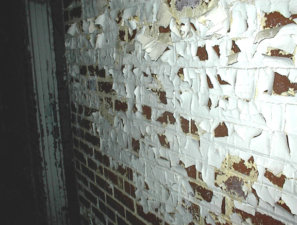
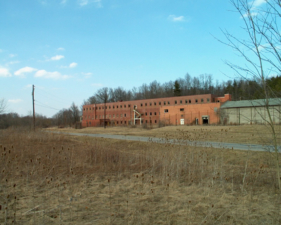
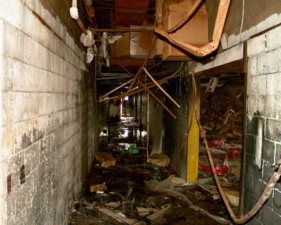
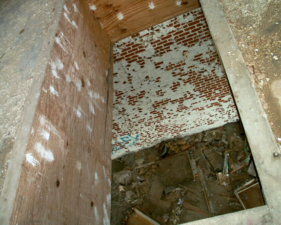
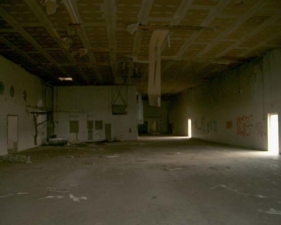
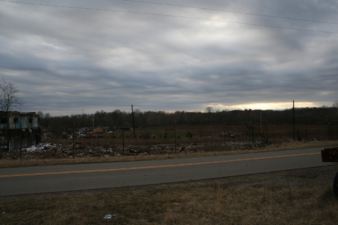
Video
You may purchase Twentieth Century Fox’s film Brubaker on Amazon through this link.


